THE FOOD ISSUE
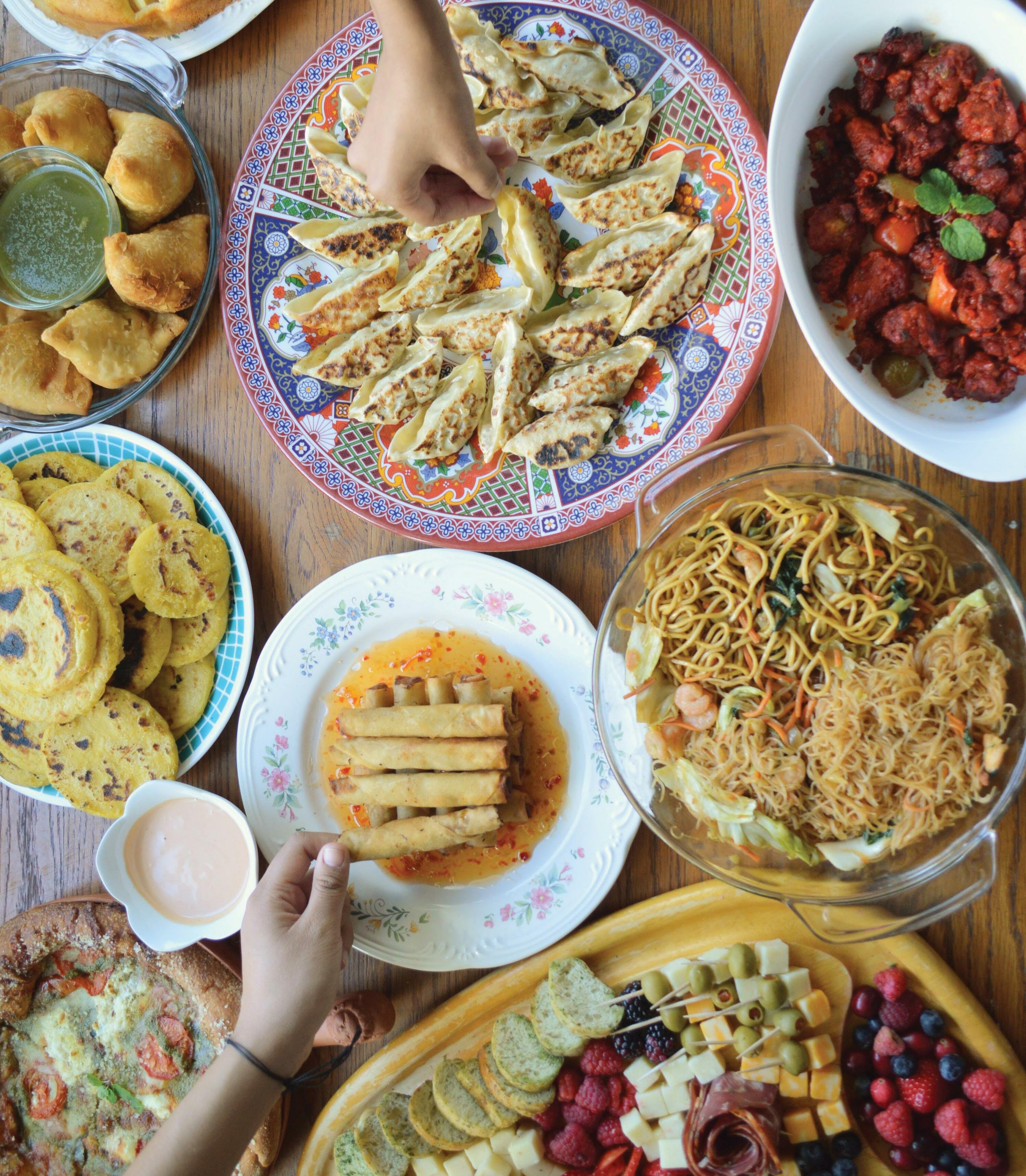
STANTON COLLEGE PREPARATORY SCHOOL DECEMBER 2022
DEVIL’S ADVOCATE


Adviser: Larry Knight
Editor-in-Chief: Sarah Hiott
Managing Editor: Ty’Hana Aldridge
Business Manager: Tatum Register
Photography Editor: Denise Soriano
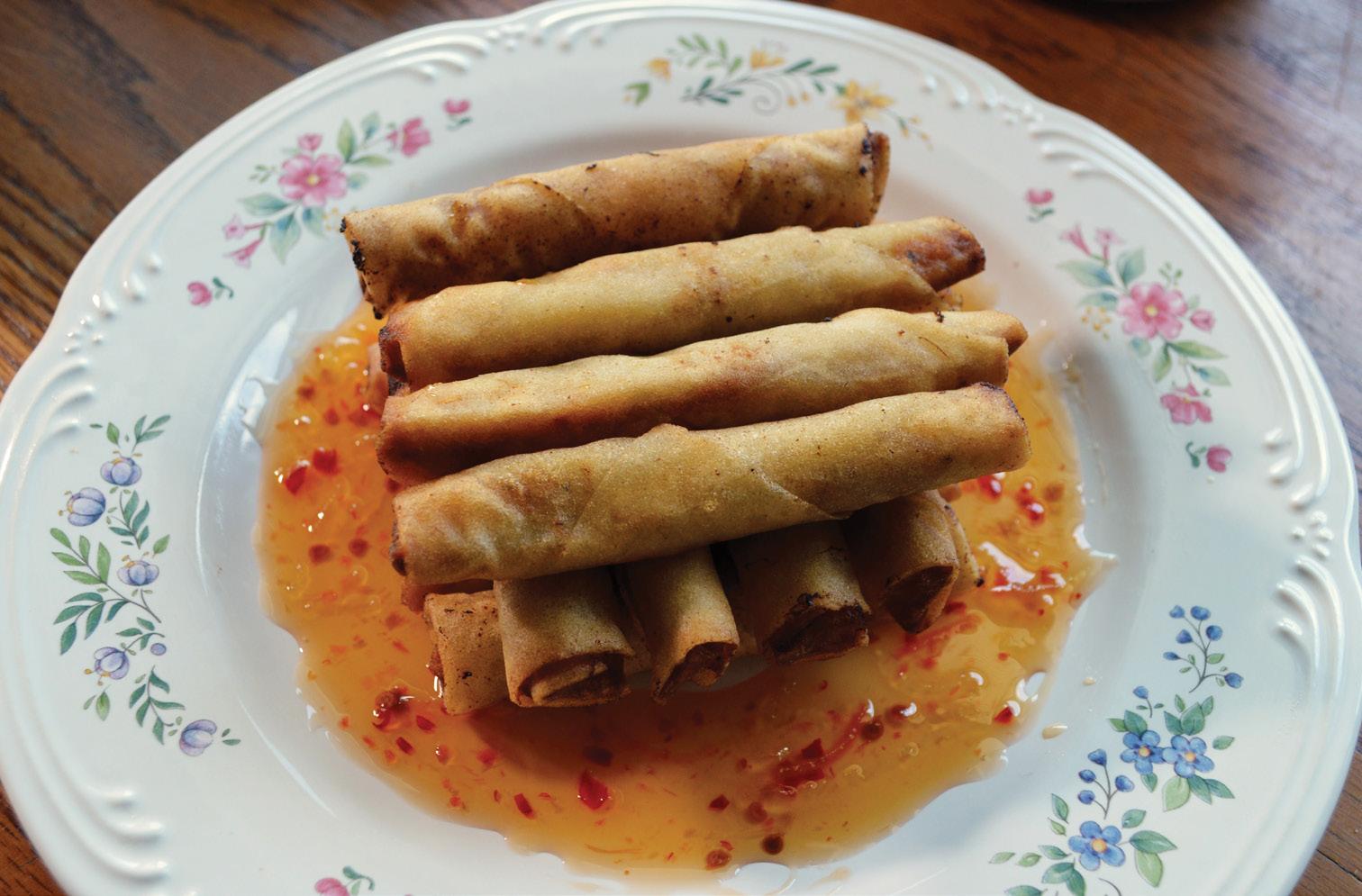
Digital Media Editor: Cameron Kight
Layout and Design Editor: Jillian Williams Assoc. Digital Media Editor: Sarah Bernardo Assoc. Photography Editor: Spurthi Nrusimhadevara
Videographer: Carlos Alvarez
Podcast Engineer: Rowan Kershner
Section Editor (Arts & Ent.): AnaSofa Girardot


Section Editor (Features): Samyuktha Sridhar
Section Editor (Opinions): Zoey Larson
Section Editor (Sports): Raza Cottey
Staf Writers: Kendall Ford, Grace Larson, Shravya Nalla, Amani Okero, Cliona Joy Piligan, Katya Sniriova
Staf Photographers: Anusha Anna, Cindy Lam Staf Artist: Hawi Said
Contributing Advocates
The Devil’s Advocate is searching for contributing writers, photographers, artists, and flmmakers. Contact Editor-in-Chief Sarah Hiott at sarahhiott275@gmail.com, Opinions Editor Zoey Larson at zoeylarson16@gmail. com, or Digital Media Editor Cameron Kight at camikight301@gmail.com.
Ads and Sponsorships
The Devil’s Advocate is dependent on our advertisers and our sponsors. When you purchase an ad with us, it reaches a diverse student population that can help your business. We can also design your ads. Our prices are: $45 (1/4 page), $70 (1/2 page), $135 (full page) $150 (back page). For an additional $5 fee, we can advertise your business on our website or podcast. Contact Business Manager Tatum Register at tatiereg627@ gmail.com or newspaper adviser, Mr. Larry Knight, at knightl1@duvalschools.org.
Follow Us on Social Media
Arts and Entertainment

Printed at Florida Sun Printing
Please recycle this magazine.
DEVIL’S ADVOCATE Twitter: @scpnewspaper Instagram: @scpnewspaper YouTube: Devil’s Advocate Newspaper Facebook: Stanton Devil’s Advocate Snapchat: @scpnewspaper Spotify: @scpnewspaper TikTok: @devilsadvocatenewspaper
12 Sports Student athletes prioritize staying healthy by being mindful of their diet, both on and of season. DIET OF AN ATHLETE 4 19 Stanton College Preparatory School students discuss food topics in society, ranging from food insecurity to issues with supply in popular food chains. STUDENT COLUMNS Food serves a prominent role in today’s diverse population. DECEMBER 2022 DEVIL’S ADVOCATE | 3 12 An anthology exploring the role food plays in students’ modern day lifestyles, portrayals of art, and various cultures. THE FOOD ISSUE Features 18 The Editorial Board discusses the rising issue of ethical consumption in a society captivated by the aesthetics of food indulgence. FOOD WASTE Opinions 6 Stanton’s diverse student body includes families who own iconic restaurants around Jacksonville. STANTON’S FAMILY OWNED RESTAURANTS Student Life 14 The coexistence of art and food encourages a fusion between the two felds. FOOD IN ART 8 Stanton students highlight some of the must-haves that make up a classic Florida picnic. THE FLORIDA PICNIC ESSENTIALS 16 Staf Writer Cliona Joy Piligan and Photography Editor Denise Soriano search for the best boba on Beach Boulevard. IN SEARCH OF... THE BEST BOBA
Jordan Grossman
8
photo by Cindy Lam
By Katya Sniriova Stories by Kendall Ford, Grace Larson, and Shravya Nalla By The Editorial Board Photos by Denise Soriano By Amani Okero Stories by
and Amina Umar Photos by Spurthi Nrusimhadevara By Cliona Joy Piligan and Denise Soriano
Cover photo by Cindy Lam
DIET OF AN ATHLETE
Student athletes prioritize staying healthy by remaining mindful of their diet, both on and off season.
By KATYA SNIRIOVA, Staf Writer
On or of the playing feld, student athletes combine diferent foods to curate a perfect meal plan for their sport. Throughout the season, athletes require certain levels of nutrients as they put their bodies through intense forms of exercise. Such proper nourishment can be equally crucial of-season as during the season. Stanton College Preparatory School athletes hold pride in their sports and this encourages them to manage a healthy diet, which can lead to signifcantly improved performance year-round.
Players are reminded to be mindful of the food they consume whenever a sport is in season. According to a study conducted in 2021 by the Better Health Channel, an online health journal, athletes’ diets should consist of 45% to 65% carbohydrates, 15% to 35% protein, and 20% to 35% fat. Based on these statistics, some athletes rely on food variation to ensure their performance remains at its peak during the year. Depending on the sport, the components in an athlete’s diet may change.
For junior Jacob Hewitt, a member of Stanton’s wrestling team, his diet directly afects the outcome of his competition.
“Particularly in my sport, you want to stay in your weight class, which is the most important [factor],” said Hewitt. “The day I would weigh in for a match, I would eat less because that would ensure I stay in my weight class.”
Hewitt’s diet cannot be applied to all student athletes because every sport sees a “perfect” diet diferently. While many other personal factors may infuence the nutrients included in a player’s meal plan, the basic food groups are never removed within any sports diet. Stanton’s athletic trainer, Ms. Rachel Keene, recommends athletes consume more carbohydrates before a game.
“Carbohydrates are the body’s frst source of fuel, [but you also want] a little bit of fat and protein,” said Keene. “[Additionally], after games, you want mainly proteins and carbohydrates to replenish the muscles.”
No matter the meals an athlete eats before or after a competition, they may become overworked and tired from the energy they utilize during their games. As a result, athletes turn towards sports drinks during their matches. According to research conducted in 2022 by the board of nutritionists at the Harvard T.H. Chan School of Public Health, “this
nutrients included in their drinks. Stanton athletes choose to include these various sports drinks throughout their games or workouts based on the benefts presented, especially when faced with problems before competitions.
“I [often] get painful cramps , so eating bananas and [drinking] Gatorade before the week of my races helps,” said freshman swimmer Gabriella Marim, who was announced as October’s Athlete of the Week by The Florida Times-Union.
Unlike Marim, various athletes do not see sports drinks as benefcial to their activities. Due to the
— Matthew Chao, 12th
type of nutrient depletion generally occurs only with high-intensity exercise that lasts an hour or more.”
Sports drinks vary by brand and drink manufacturers advertise in diferent ways to ofer the benefts of their product to their consumers. Gatorade’s slogan in the hydration section of their website states that they, “Help replace what you lose in sweat.” Body Armor’s website lists the diferent supplements their drinks have within them, which are healthy for athletes. Powerade combines the two, stating, “Helping to keep you hydrated is our number one job. Giving it your all is yours,” while also listing statistics containing the diferent
artifcial sugars in sports beverages, students leave them out as a constant part of their routine.
“If I do not drink a lot of water throughout the day, then I might drink a Gatorade or two to help replenish the electrolytes,” said sophomore Mackenzie Mock, who participates in weightlifting and wrestling during the winter sports season. “But I try to mostly drink water because of all the sugar [in Gatorade].”
Marim and Mock’s schedules show how consumption of energy drinks are subject to change for all athletes. Selecting a sports drink may be a simple, quick choice, but other responsibilities,

STUDENT LIFE 4 | devilsadvocatepaper.com VOL. XXXVII, NO. 1 SPORTS | devilsadvocatepaper.com VOL XXXIX, NO. 2
photo by Anusha Anna
“In individual sports such as swimming, it is really easy to get into your head, controlling [some aspects of your life] is a way to [mentally] ground yourself,”
such as attempting to stick to a devised meal plan, may place additional stress on players, which can afect their mentality. In a study published in February 2021, the Public Library of Science said, “The latter result [of athlete’s performance] is explained by too much focus on the task execution induced by the additional motivation to perform well in high-pressure conditions. The additional focus disturbs task execution which normally is performed automatically.”
When looking for a solution to such issues, setting a certain period to eat unhealthy meals, which do not comply with the athlete’s overall diet, encourages a better relationship with food.
“Usually, the weekends are my cheat days, when I eat [my preferred junk foods],” said Mock.
Groups of student athletes plan their cheat days on weekends, just like Mock does. However, due to all players’ varying schedules, personal preferences, and focus on specifc dietary enhancements, the set period of a cheat day can fuctuate from person to person.
Yet, not all players see the necessity of a cheat day. Junior Maria Egorova runs cross country during the fall season and track and feld during the spring season. She chooses not to include any cheat days within her routine.
“I don’t have cheat days; if I want something sweet, I eat it, but I will do a really small amount just to satisfy my sweet craving,” said Egorova.
Student athletes similar to Egorova manage the number of sweets they eat throughout the week because they prioritize their personal diet. Egorova demonstrates how an athlete’s rigorous schedule does not require a dedicated cheat day to stay in shape.
However, while temptations are constantly surrounding student athletes in their schools, a few opt to skip these unhealthy snacks or meals altogether, as they believe it enhances their performance.
“On the days I do not eat right, I feel diferent both physically and mentally. [When I do eat properly, mentally] I know that I am controlling what I can, and that makes me feel better about the way I perform, and physically I do not feel sick,” said senior swimmer Matthew Chao.
Chao stays consistent with the regimen he set for himself. This diet prompts a good mindset when handling the impact swimming has on his
mentality. In individual sports, athletes like Chao rely on a strong mindset as the foundation for good performance and favorable results.
“In individual sports such as swimming, it is really easy to get into your head, so controlling [some aspects of your life] is a way to ground yourself,” said Chao.
By refraining from eating unhealthy foods, Chao stays in control of the elements that afect his mentality and performance. This encourages a positive headspace for his various meets.
Whether athletes have cheat days or not, consistency within their diets is a large component during the season. However, an athlete’s regularity about their diet may change when the ofseason months come around. Players may see diet diferently and conform to comfort instead of keeping a plan which promotes a suitable performance. Additionally, an athlete’s meal plan during the season holds more components than
Stanton Athletes
when it ends, so food intake and the types of meals are subject to change.
“During the season, I eat more than I would ofseason because I need more energy throughout the day,” said Egorova. “Of-season I have to eat less, and that is hard because I’m used to eating [a certain] way, and then the season is over and I am already gaining weight.”
The quantity of food eaten demonstrates the efects of the shift between the on and ofseasons. For Egorova and other athletes, this signifcantly afects their daily lives. Diferent athletes may aim to eat the same types of food while having a lessened quantity, or they can also eliminate some dishes from their routine. However, food is not the only component of a student’s diet that changes.

“When I am of-season, I do not drink a lot of water, [while] during [the] season, I make it a priority since I get dehydrated quickly,” said sophomore cross country runner Kashvi Desai.
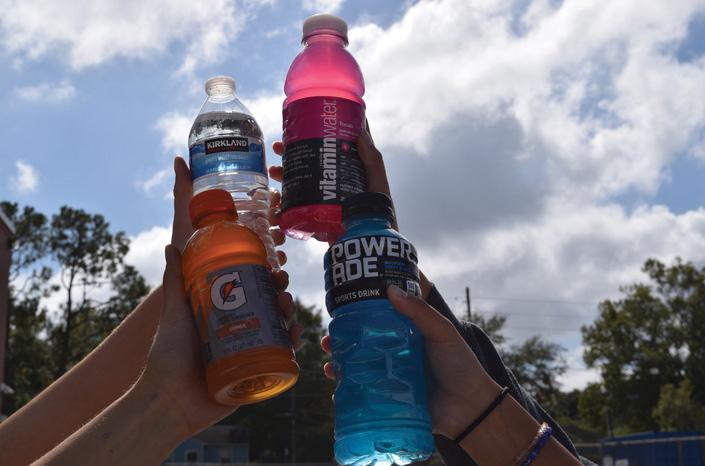
Egorova and Desai represent athletes whose everyday routines must adjust when their seasons end. This shift can be difcult, since players’ schedules, regimens, and diets most likely revolve around their sport. However, with proper management, the of-season period can prove to be equally as productive as during the season.
A student athlete’s diet is signifcant to themand their sport because of the impact meal choice has on both mental and physical health. The diet set for all competitors deeply connects to their performance at events and practices. The various nutrients are the start for the accomplishments they expect to achieve in their games. Therefore, an athlete’s success relies signifcantly on their dedication to a healthy and balanced diet.
SEPTEMBER 2020 DEVIL’S ADVOCATE | 5 DECEMBER 2022 DEVIL’S ADVOCATE | 5
photo by Anusha Anna
inforgraphic by Raza Cottey
Stanton athletes enjoy a variety of drinks during their practice and games.
Of
Gatorade- 65% Powerade- 6% Bodyarmor- 15% Other- 14%
Sports Drink Preferences
FAMILY OWNED RESTAURANTS
-
stanton’s that you may have heard of!
by DENISE SORIANO, Photography Editor
EUROPEAN STREET CAFE
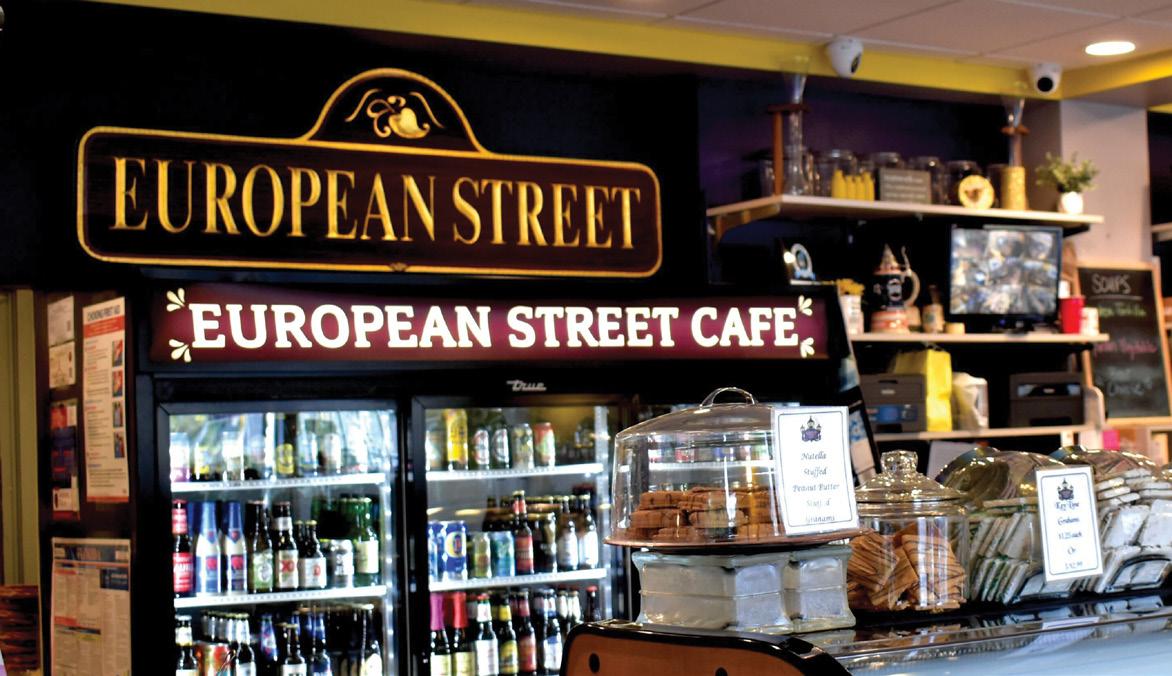
Junior Amelia Zarka’s family founded European Street Cafe to “[create] a little slice of Deutschland” in Jacksonville. A local hit since the 1990s, the restaurant has grown to open three branches across the city — Riverside, San Marco, and Jacksonville Beach.
5TH ELEMENT
Ranked as the No. 1 Indian restaurant in Jacksonville by tripadvisor.com, senior Dakshish Sannala’s father owns the renowned 5th Element. Their website reveals that “restaurateur Sridhar Sannala [wanted to] to share his love for the food and culture of his native India.”

SAKE HOUSE
In close proximity to Jacksonville’s scenic Southbank Riverwalk, Sake House serves authentic Japanese cuisine. Senior Shawnick Wang’s family owns this restaurant, serving the city’s community with locally-adored sushi and hibachi.
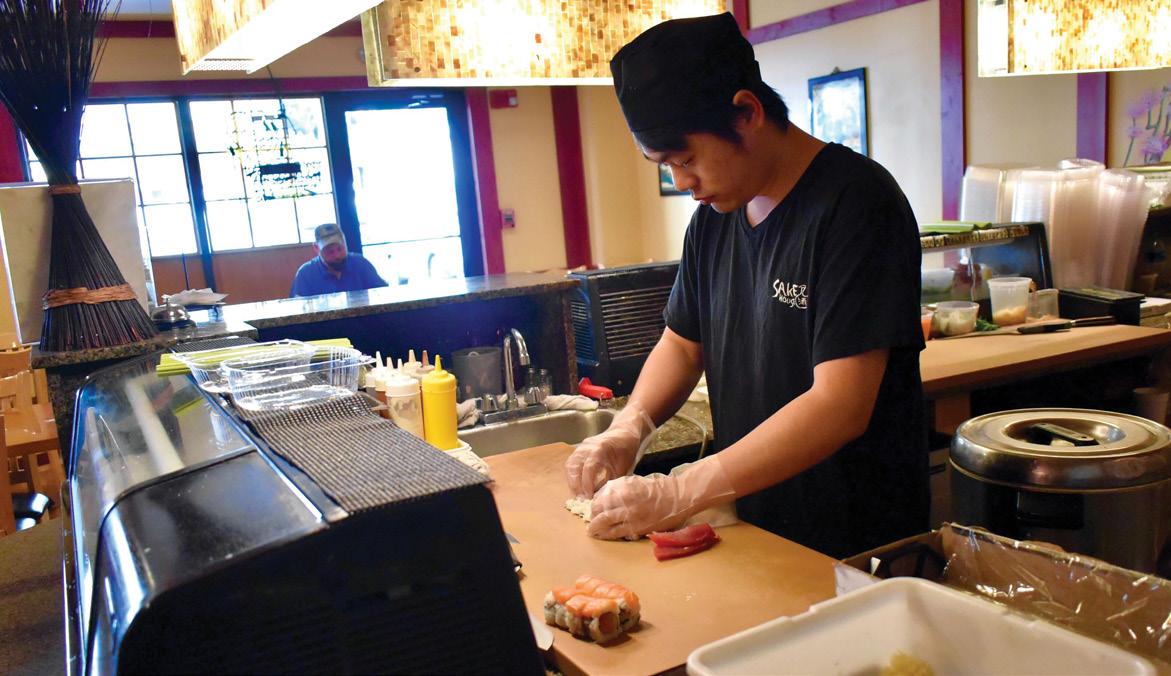
STUDENT LIFE 6 | devilsadvocatepaper.com VOL XXXIX, NO. 2
Photos





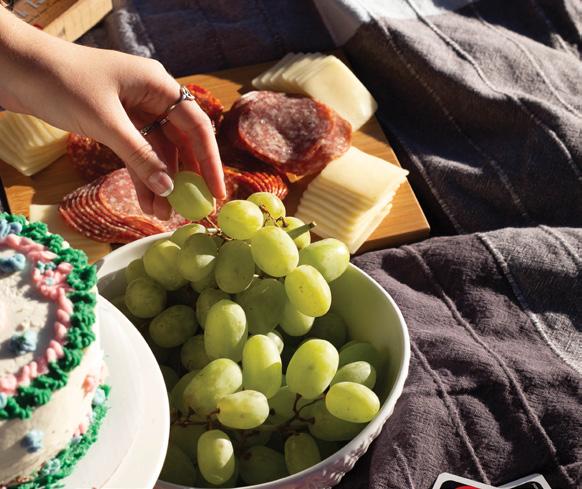







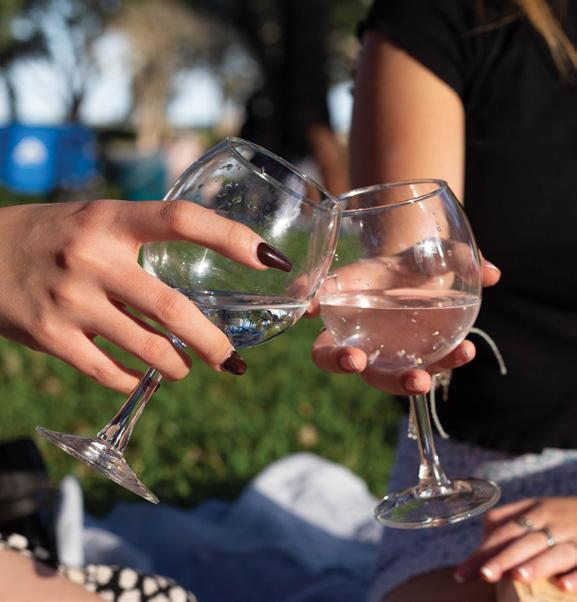
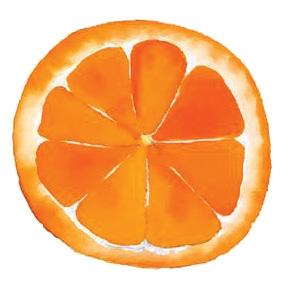 Photos by SPURTHI NRUSIMHADEVARA,
Photos by SPURTHI NRUSIMHADEVARA,
a delectable spread good company On a sunny autumn day, seniors Natalija the perfect picnic and demonstrate some memorable Florida picnic STUDENT LIFE 8 | devilsadvocatepaper.com
Fl rida Picnic
Picnic Essentials:






 NRUSIMHADEVARA, Associate Photography Editor
NRUSIMHADEVARA, Associate Photography Editor

the perfect location

entertainment
DEVIL’S ADVOCATE | 9
Natalija Dobric and Angelica Swisher enjoy some of the essentials that ensure a Florida picnic experience.
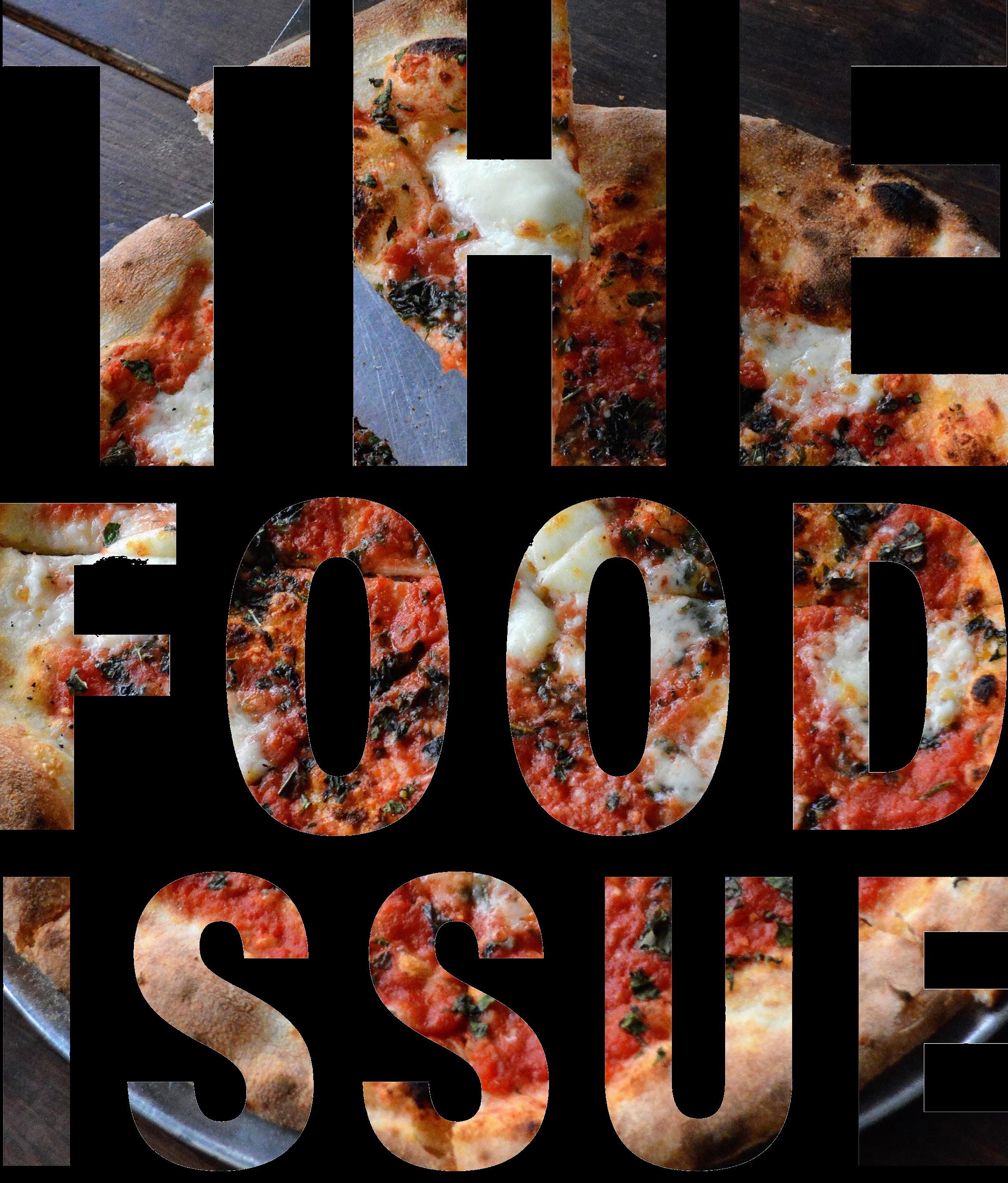
SEPTEMBER 2021 10 | devilsadvocatepaper.com FEATURES
Food and Identity

Food can serve as a unique form of cultural expression for students within their community.
By KENDALL FORD, Staf Writer
Many Stanton College Preparatory School students consider food to be an important aspect of their cultural identity. From cooking styles and ingredients used, to types of dishes prepared, cuisine can be a direct homage to a student’s heritage. Across the cafeteria and courtyards, lunchboxes are typically flled with homemade foods that provide insight into a student’s life.
The initial introduction of many students to their culture starts at home with the passing down of traditions from parent to child being facilitated through food knowledge. For some students, their best memories are the ones spent in the kitchen cooking with and learning from their families through food.
“A couple years ago I was in my great grandmother’s house, and she made me this meal called pollo guisado,” said junior Ariana Williams.
Food allows Jeanniton and countless other students to keep their traditions alive while fostering bonds with each other and their culture. Often tied to holidays and other special occasions, these ethnic dishes can keep
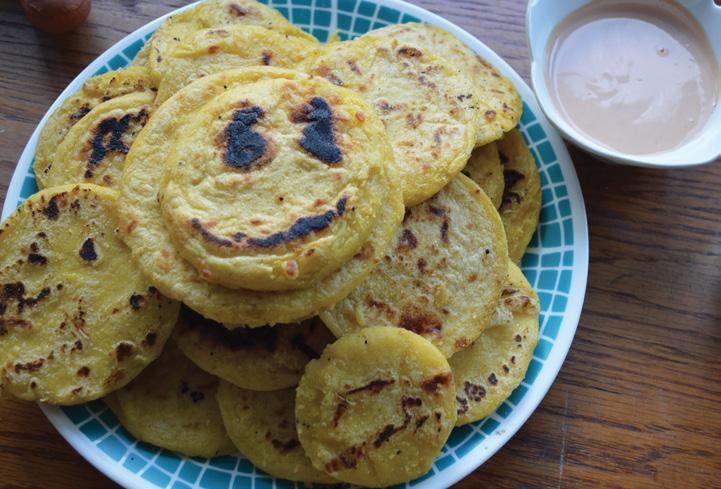
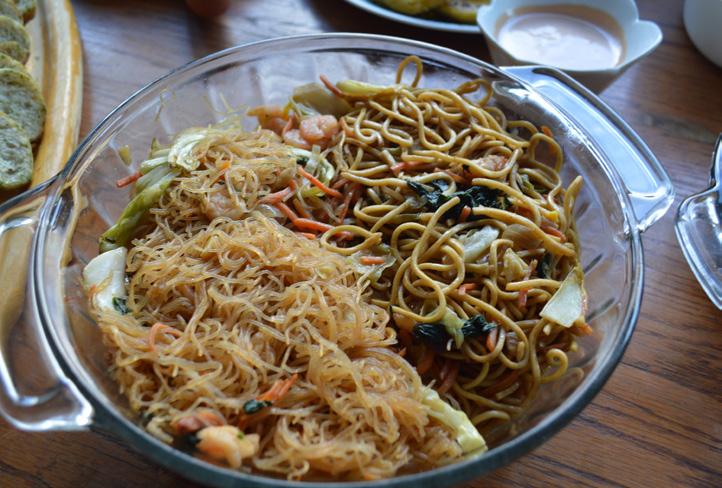
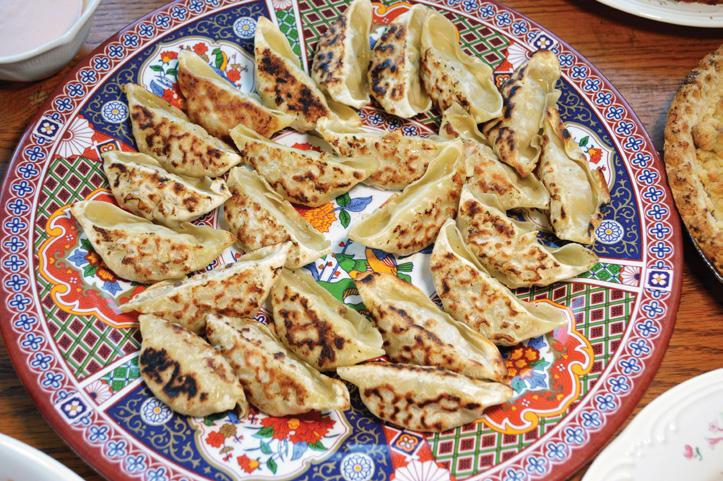
sharing of food allows some students to get to know each other on a deeper level and build connections with others they may not have had previously.
“I have a lot of Indian friends, so we get a lot of the same types of foods, so it is really cool to to each other about the food,” said sophomore Siddhant Jain.
Jain can not only increase his connection to his own culture, but could further develop his connection with peers that share a common identity. Seeing familiar dishes can foster a love of ethnic foods. Though Jain and other students have positive experiences bringing food to school that allow them to connect with their peers, some students have diferent experiences.
“The frst few times I brought (traditional food) they judged me. They would not sit with me during lunch,” said freshman Pranathi Kalkura. “Eventually
made it for me, and she gave my mom the recipe.” Williams later added that she would eventually get that recipe from her own mother.
Being Puerto Rican, Williams, like many other students, experiences the sharing of knowledge through food frsthand. For certain families, traditional foods can become a family treasure that can serve to pay homage to their identity. Through this, these foods can gain a deeper meaning for students. In Williams’ case, the food became connected with memories of her grandmother. Because of the importance of these ethnically representative dishes, some culinary traditions can become intertwined with holidays and celebrations.
“Our Soup Joumou, which is pumpkin soup, we make that every year to celebrate our New Years with our favorite food,” said senior Rodangenica Jeanniton, who is of Haitian descent. “My grandma always starts making it Dec. 31 and if it is ready by then, we all gather as a family and eat it as the clock turns midnight and start the new year together.”
through the habituality of these events. The invaluable time some students get to spend learning from their family through culinary traditions can help develop their cultural identity. Cultural expression through food is not limited to the home though, many students bring ethnically representative foods to lunch.
“Stanton is so diverse. Getting to try diferent foods from diferent people plays into the family that we have here,” said junior Courtney Brown. “People have not tried things from each and every culture so [students] kind of bring that part of themselves here for all of us to try which connects us more.”
For Brown, outside of connecting with their family and Caribbean culture, food connects them to their peers. The individual diversity of each culture represented within the student body can be conveyed through these lunchroom interactions. Students can bring food to share while also receiving new food from others. This
that changed and people just got used to it and did not really care that much that I have a diferent culture and do not eat the same foods that other people do.”

In Kalkura’s experience, sharing culturally representative food did not always elicit a positive reaction. Instead of fostering a sense of community, they experienced possible social alienation. Because of the uniqueness of the traditional foods she brought, some students criticized the food and by extension, her culture. Though Kalkura’s initial experience was negative, she also signaled a hope for some students that over time people begin to accept these unique foods.
Food permeates the lives of all people. Traditional cuisines can serve important purposes in some students’ lives. Traditions and knowledge infused into ethnically representative foods can allow some students to develop their cultural identity while also providing the opportunity to forge connections with their history and those around them.
DEVIL’S ADVOCATE | 11
photo by Cindy Lam
photo by Cindy Lam
photo by Cindy Lam
Colombia
China Philippines
By SHRAVYA
As dietary restrictions become more prevalent, food establishments are beginning to make meals that are inclusive of all dietary needs. Some of the most common changes to these diets include avoiding meat, animal products, lactose, or gluten. Restaurants across the nation are considering those with dietary restrictions when creating their menu. However, there are still numerous places failing to include meals that acknowledge these limitations, specifcally at school. The inconsistency between what is ofered and restricted diets often limits students from eating school lunch.

Stanton College Preparatory School includes a diverse group of students with restricted diets. According to a poll conducted in October 2022 by the Devil’s Advocate, 24% of students have dietary restrictions. At school, these students face limited meal options and have to fnd alternatives to school lunch, such as a home-cooked meal. Yet some students lack other options and have to buy school lunches.
“Since I am gluten-free and lactose intolerant, it is really hard to fnd certain meals in the cafeteria,” said freshman Natasha Searl. “One item will be gluten-free but it will have cheese on it, so I will not be able to eat it. This forces me not to eat lunch or have to make lunch for myself.”
Stanton students with restricted diets are often faced with a situation similar to that of Searl. Sophomore Ritvvika Guleria hopes to witness school lunches becoming more inclusive as she continues to have a hard time fnding meals that correspond with her dietary limitations.
“The only meat I can eat is chicken, so sometimes if the menu consists of beef and pork, the only other option I can choose from is vegetarian,” said Guleria.
The high school lunch menu, provided by the Nutrition Service Center which is located in Jacksonville, consists of meals ranging from chicken sandwiches to cheese pizzas. The menu does not include exclusive meals for vegan, lactose intolerant, or gluten-free students. The Nutrition Service Center does produce healthy vegan snacks, such as cupped fruit, but they do not make any vegan entrees. Instead, the entrees consist only of chicken or beef. Although the salads are vegan, they include dairy and wheat toppings such as ranch dressing and croutons, which include lactose and gluten.
“If [a student] is vegan or vegetarian, they do not have many options that do not include meat or dairy,” said freshman Jimia Love, who is lactose intolerant.
In certain scenarios, religion can have an impact on an individual’s diet or food preference. This is a common occurrence at Stanton considering the school’s diversity. As a Muslim, sophomore Tameem Sheikh does not eat meat unless it is ethically killed. He began to realize the lack of inclusivity in school lunches as there are not many options for him to choose from.
“If I want to eat school lunch, my only option would be cheese pizza,” said Sheikh. “Sometimes they do have new options, such as the tomato soup, but then they stopped serving that so now its back to only pizza.”
Despite the non-inclusive meals, Duval County Public Schools are making an attempt to reform school lunches through the Student Choice Program. This program is a survey that gives students the opportunity to vote for new meals based on their food preferences. Students are now given the opportunity to comment on any suggestions they might have for new lunch items.
“Every now and then Stanton does a super lunch where they put [meals] up for the kids, and then they get to vote on their [favorite meal],” said Mildred Merkerson, the manager of Stanton’s kitchen. “If the kids like a specifc meal and they vote for it, then we will run it.”
In the survey, three of the four menu items that students can select from consist of meat, mainly chicken. Duval County Public Schools designed the Student Choice Program to make a purposeful change in school lunches. Similarly, Stanton students and faculty members have proposed multiple ways in which the district can make school lunches more inclusive. Freshman Alyssa Hardy feels Duval County Public Schools should fnd a new provider for school lunches in the hope it will make an impactful change around the school.
“The district should use local and gluten-free providers to make school meals more inclusive,” said Hardy.
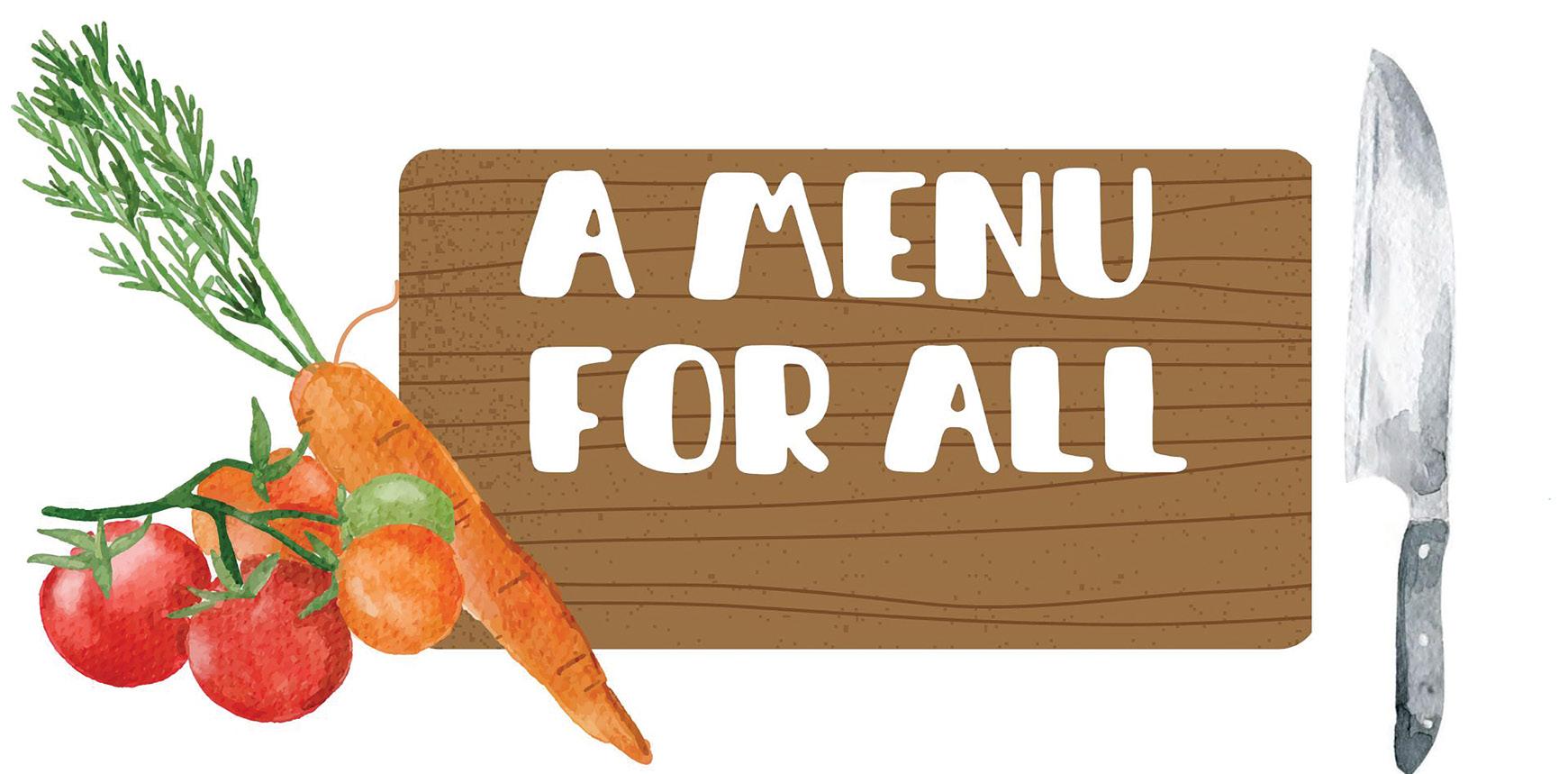
Sophomore Esther Oo has a diferent approach, she believes the district should cook multiple variations of each dish, which will accommodate for the students with fxed diets.
iiiii“I think the district should have diferent versions of each meal,” said Esther Oo. “For example, instead of having only cheese pizza, make it vegan or gluten-free.”
As the manager of Stanton’s kitchen, Merkerson values the opinions of students and their meal preferences. She communicates with her boss, Francisco O’Connell, in regards to the suggestions she hears from Stanton students, this is often through the surveys held online.
“If we come up with an idea that we think is going to work for our school, we submit it to our boss and then they make sure it fts with the school’s criteria,” said Merkerson. “If it fts, then they will start to serve those meals.”
There continues to be a global rise in consumers with dietary restrictions and restaurants across the globe are trying to value these customers. Although some students are struggling to fnd meals that correlate with their food limitations, the district is making an attempt to expand Duval County Public School’s lunch menu through programs that allowsfor Stanton students to expand their palate within their limitations. With this, students hope to see a huge change in the inclusivity of meals at Stanton.
VOL XXXIX, NO. 2 12 | devilsadvocatepaper.com FEATURES
NALLA, Staf Writer
Duval County Public Schools aim to create more inclusivity in school lunches.
infographic by Samyuktha Sridhar
Throughout its history, Jacksonville’s food industry has been defned by the presence of local restaurants. In more recent years, these businesses have grown in popularity, gaining recognition and support from the public. Students at Stanton College Preparatory School are among those who have contributed to this rise in local commerce. By visiting these locations, students introduce themselves to Jacksonville’s diverse
By GRACE LARSON, Staf Writer
recipes that serve as a reminder of home. This allows them to forge tighter bonds with people who share similar experiences.
“People who have similar backgrounds [visit local restaurants] because it feels more like home,” said sophomore Kirsten Moore.
While Jacksonville is home to various cultural restaurants, it also contains establishments that promote the city’s geographical background.
Mesa looks to attract individuals drawn to the city’s southern identity, ofering classic American dishes with a South Indian twist. Local businesses have aimed to strengthen their reputation by integrating unique concepts into the culinary feld.
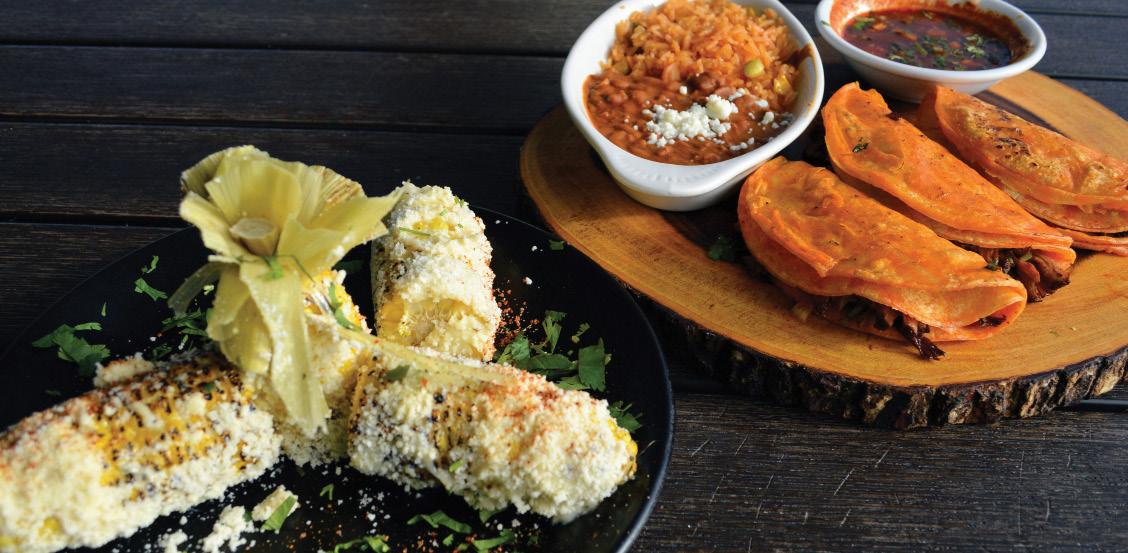
The infuence of several Jacksonville restaurants has exceeded city limits with the opening of stores in nearby states. This expansion allows them to share their unique recipes with a wider audience, thus furthering their impact on the food industry. One example is the renowned Metro Diner, an authentic Jacksonville restaurant once featured on the Food Network show, “Diners, DriveIns, and Dives.” Following this appearance, the business opened several shops throughout the United States, gaining enough support to combat competition from chains.
“A local restaurant is [going to] have a local chef creating a menu, [adding] variety and fair to dishes you wouldn’t see at a chain,” said sophomore Jack Wheeler.
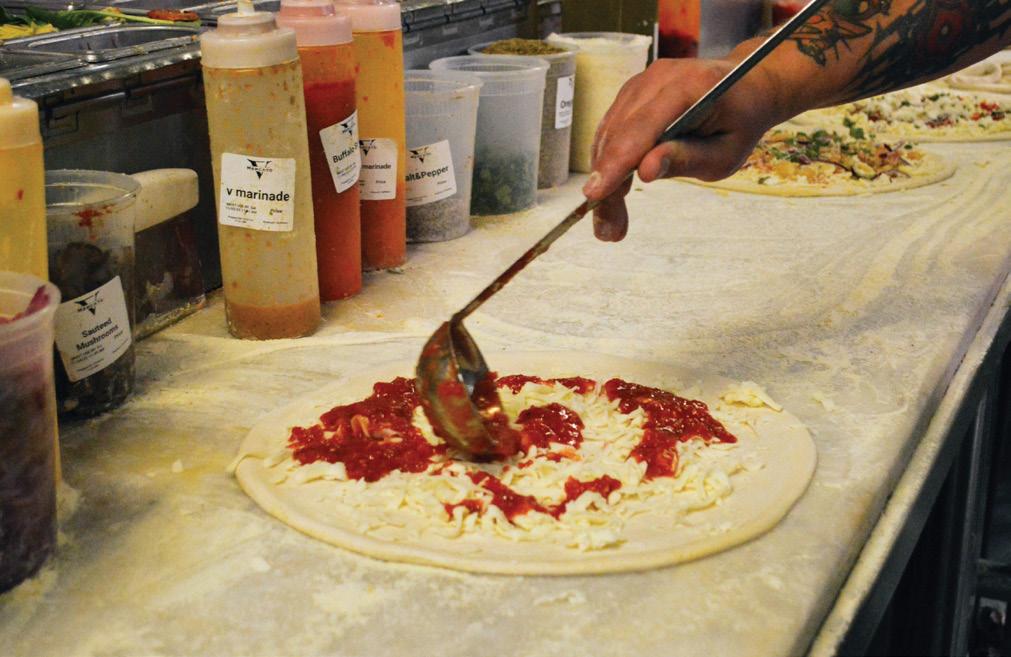
This diference in authenticity motivates residents to visit such shops, separating these businesses from the larger corporations they compete against. These original ideas further the image of local restaurants within the community.
“Our cuisine is something that Jacksonville has not seen before with traditional Indian restaurants,” said Brandon George, co-owner of Mesa. “We are just doing something a little bit diferent, so we are ofering something new and exciting for people.”
Regardless of this disparity, advertisements made by these restaurants often reach a smaller audience, thus limiting their impact on the community. These businesses rely on attention from the public to generate the proft they need to remain open.
“Local restaurants [require] more recognition than chains,” said freshman Amogh Huilgol.
range of favors. This grants them the opportunity to learn more about the city’s food culture and its impact on the community.
Jacksonville’s authenticity is highlighted in the ways residents choose to convey their cultural beliefs. Each individual has the liberty to express this in their own unique way. According to a United States Census Report conducted in 2020, 11.7% of Jacksonville’s 949,611 residents were born outside of the country. Wishing to highlight their ethnic background, several of these individuals have opened their own restaurants around town. This allows customers to connect with their ethnic community throughout the city.
“[Local restaurants] help people who might not know about [certain cultures] connect through a wider love of food,” said senior Juliana Thint. “With Jacksonville being such a melting pot, [each] restaurant just makes [the city] that much more unique.”

These businesses help enhance their customers’ understanding of diferent cultures. By visiting such restaurants, individuals are exposed to authentic
Despite eforts to promote local restaurants, they often make less money than those owned by big companies. This battle between chains and locallyowned businesses has worsened since the spread of the coronavirus. These establishments had to learn to balance food production with modern health regulations. This has made it more difcult for them to keep pace with chains.
“[Competing with chains] is a challenge, but it is something we have started to adapt to and the little
community we have [built at Mesa] is really strong,” said George.
Jacksonville’s food identity is a combination of international and southern concepts that attract various customers. Local restaurants rely on these ideas to strengthen their reputation in the food industry. Despite their recent surge in popularity, the status of local businesses remains threatened by large corporations, prompting residents to question their stability. Regardless, local restaurants have learned to face and adapt to these hardships, inspiring visitors with authentic cuisine that is not available elsewhere.
DEVIL’S ADVOCATE| 13 DECEMBER 2022
Birria tacos and Mexican street corn from Anejo Cocina.
photo by Cindy Lam
Making of a margherita pizza at V’s Pizza.
Catering to the city’s location along the Atlantic Ocean, River & Post is a restaurant that ofers a variety of seafood. This appeals to those looking for an authentic Jacksonville experience. Similarly,
photo by Cindy Lam
Jacksonville’s culinary identity is defned by the authenticity of its local restaurants.
FOOD
IN ART
By AMANI OKERO, Staff Writer
Photos by ANUSHA ANNA, Staff Photographer
Imagine the appetizing smell of fettuccine alfredo, spaghetti and meatballs, gourmet steak paired with mashed potatoes, or a simple burger. Now pair these foods with an art exhibit, a play, or listening to soft jazz. From local options to international ones, food and art often overlap to form enjoyable moments. By adding new layers to these encounters with artistic and culinary events, institutions like restaurants and museums are further promoting the two fields.
Within Stanton College Preparatory School’s culturally diverse and artistic student body, the relationship between food and art is often overlooked. Students often think having artistic works and food in the same spaces distract viewers from the presented pieces.
“People may only go [to establishments] for good food instead of focusing on [the] art,” said sophomore Serena Barbell. “It is a bad thing because the artist’s work won’t be as appreciated as [much] as it should be.”



While students like Barbell believe that if food and art are in the same setting one may receive more attention, others believe both mediums can enhance their shared environment.
“Food is an art form in itself, so it makes sense to combine the art forms into one place and enjoy them at the same time,” said sophomore Anna Naudascher. “[People] tend to enjoy their surroundings more.”
Local restaurants like Soupa Noodle Bar compliment their food with a touch of stimulating visual art throughout their aesthetic environments.

Stanton students and patrons alike can enjoy a steaming bowl of Soupa Noodle Bar ramen and its unique anime wall designs.

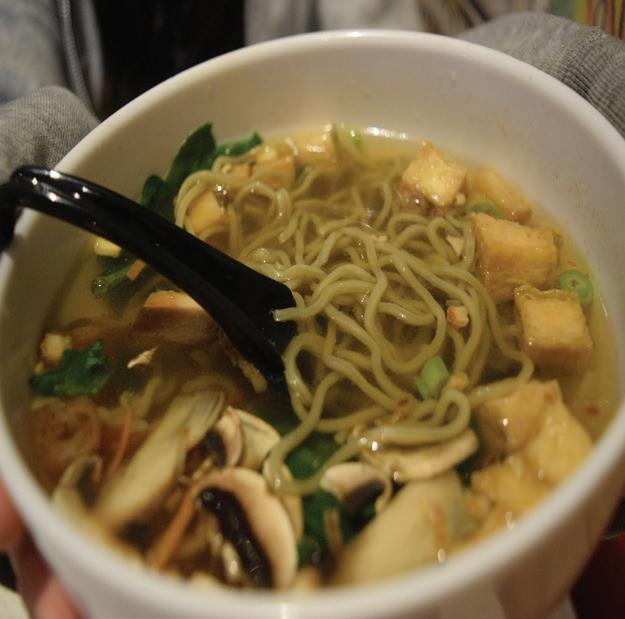
Individuals like Naudascher believe the intersection of food and art can promote an innovative outlook on food. Whether it is through plating, balancing complex flavors, or creating a savory taste, these creative elements not only enhance the enjoyment but also provide a form of creative expression. Culinary experts like Executive Chef Melissa Nolan at the Cooking Jax Studio believe food can be a form of visual art.
“You eat with your eyes first so when you see a plate you literally see an art piece,” said Nolan. “When you’re trying to compose a dish, you’re trying to hit all those [textures and flavors]; like a piece of music, we’re trying to hit our [musical notes].”
Nolan and others involved in both the culinary and artistic sphere view food as something that compliments art. By meshing visual and culinary arts together, both can heighten encounters with museums and art exhibits that demonstrate the two.
From prestigious art museums to local restaurants, food and art are consistently in unison. While some think the two should be separate, both have an influence on each other, making food and art a powerful combination.

With aesthetic and culinary fushions, food and art combine to make the perfect blend.
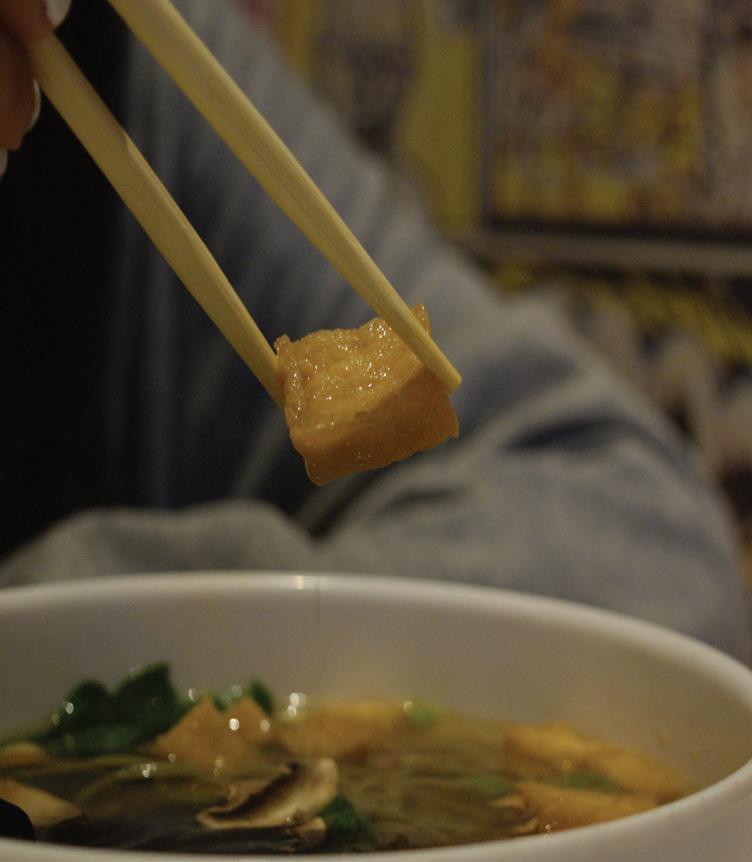
VOL. XXXIX, NO. 2 ARTS & ENTERTAINMENT
yet tend to forget they can coexist together. Everyone can appreciate art and food within their respective fi elds,
''Food is an art form in itself, so it makes sense to combine [food and art] into one place and enjoy them at the same time.''
14 | devilsadvocatepaper.com
— Anna Naudascher, 10th

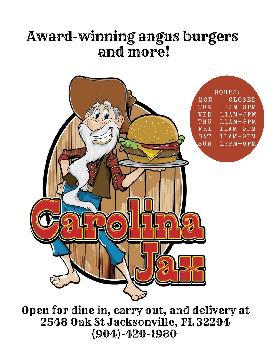

IN SEARCH OF...





the best boba








 By CLIONA JOY PILIGAN, Staff Writer
By CLIONA JOY PILIGAN, Staff Writer




 Photos by DENISE SORIANO, Photography Editor
Photos by DENISE SORIANO, Photography Editor





 Name: Cliona Joy Piligan Position: Staff Writer
Name: Cliona Joy Piligan Position: Staff Writer





Favorite Boba Flavor: Taro


Though I do not drink boba often, I relish every bubble tea I order. Personally, taro milk tea is a must-have for its natural sweetness and unique shade of purple. For a sweeter drink, I would choose brown sugar milk tea for its molasses and touch of brown sugar.



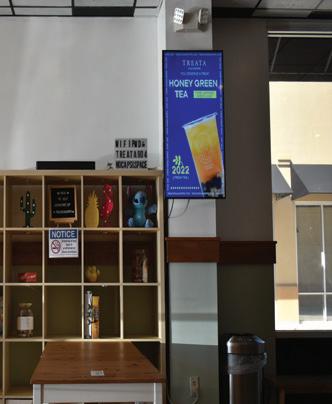
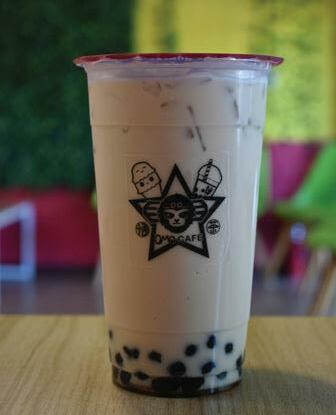
Name: Denise

 Soriano
Soriano





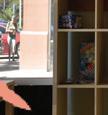


position: Photography Editor Favorite Boba Flavor: Matcha
As a self-proclaimed connoisseur, I have tried my fair share of boba tea. During quarantine, when all of the shops were closed, my family and I even learned how to cook our own tapioca pearls. As a result, boba is a significant part of my diet.
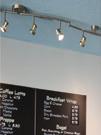








Nom Nom’s presentation was the most unusual out of the four shops visited, featuring a clear dome for the lid as opposed to the classic plastic film the consumer typically stabs with a special, wide straw. The drink itself had a combination of well-cooked boba but a slightly bland drink. Although the tapioca was chewy and its container was unique, these features did not outweigh the lack of flavor in the black milk tea itself. Overall, Nom Nom Boba Tea came in last place for the best boba, though I would still personally recommend it.” D.S.
“On my first sip, I tasted a cascade of milk, ending with a slightly bitter aftertaste of black tea that was overpowered by its flavor. As for the tapioca, it was smaller but tough to chew. While I like the minimalistic design of the cup, the milk itself was very sweet, and the black tea could be stronger. Altogether, Treata Tea Shoppe’s black milk tea takes third place for the best boba.” — C.P.
“Dubbed “Taiwan Milk Tea,” the drink had an all-inclusive price, meaning there was no extra charge for the pearls. This feature is unique since many other boba shops, such as Treata and Aroma Corner charge separately for any topping. While I appreciate this feature, it may not be preferable for those who tend to opt out. My taste buds were met with a perfect balance of milk and black tea, which was complemented by the perfectly cooked tapioca pearls. Compared to the other two shops, OMG Cafe’s boba was significantly softer and smaller, making the drink much smoother and cohesive overall. Out of the four boba shops, OMG Cafe takes second place for the ultimate boba.” — D.S.
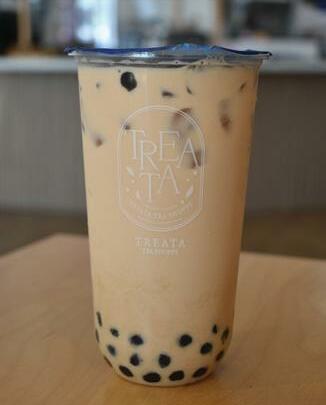
Aroma Corner’s milk tea prices were the cheapest out of the four boba shops, with a large sized drink costing $4.50. This time, the boba tea was bolder and darker than Treata’s. On my first sip, I tasted a blend of bitter and sweet with a sugary aftertaste. The tapioca, though mushy, had a faint flavor of honey. Even with the addition of smaller ice cubes, the tea did not taste watery. Overall, Aroma Corner’s black milk tea takes first place for the best boba for its bold flavor and cheaper price in comparison to OMG Cafe.” — C.P.

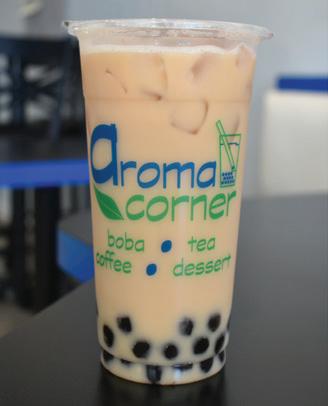
16 | devilsadvocatepaper.com VOL XXXIX NO. 2
Price: $
/ Price: $4.50 / Price: $5.25 / Aroma Corner OMG CAFE NOM NOM
6.10
Price: $
/ Treata Tea
5.94
photo by Cindy Lam
photo by Cindy Lam

DEVIL’S ADVOCATE
2022-2023 Editorial Board
Ty’Hana Aldridge Tatum Register
Cameron Kight Denise Soriano Jillian Williams
Editor-in-Chief Managing Editor Business Manager Digital Media Editor Photography Editor Layout and Design Editor
iiiiiThe Devil’s Advocate serves as the ofcial newspaper of Stanton College Preparatory School. It is produced quarterly by members of the Journalism class. The editors reserve the right to edit any material submitted into the paper for content, grammar, length and accuracy.
iiiiiThe Devil’s Advocate is a public forum for student expression, which encourages free exchanges of opinions concerning controversial and noncontroversial community and school related issues.


The advertisements and ideas expressed within the newspaper are not necessarily those of the newspaper staf, Stanton administration, or the Duval County Public School Board.
iiiiiThe Devil’s Advocate accepts advertisements from all businesses in the Stanton community. The ad contract can be given to a staf member or newspaper adviser Mr. Larry Knight.
iiiiiReaders may contact any staf member or the adviser at (904) 630-6760 or at knightl1@duvalschools.org.
Letter from the Editor
From local restaurants to inclusivity in meals, Issue 2 focuses on our relationship with food. With a diverse community in Jacksonville, and more specifcally, at Stanton College Preparatory School, educating students about various cultures through food is valuable to increase acceptance and modernized thought. This issue aims to promote these ideas, as well as the value of diversity, athletic diets, and the connection between food and art.
Photography Editor Denise Soriano highlights family restaurants with various cultures integrated into their food, bringing attention to both local business and diversifcation.
In light of recent years, local restaurants have become increasingly important in stimulating Jacksonville’s economy. Sadly, a large percentage of small businesses were forced to shut down during the pandemic of 2020, so extra appreciation for the restaurants that persevered is necessary. Places like European Street and 5th Element are popular amongst students who participate in the promotion of cultural diversity just by eating at their favorite restaurants. However, there are other cultural hotspots which deserve the attention of Jacksonville residents. I hope this issue will raise awareness and emphasize the importance of experiencing cultural variety, the acceptance of specifc diets, and the art form that is food.
Food Waste
By THE EDITORIAL BOARD
Whether eating out or in the comfort of one’s own home, excessive waste is found virtually anywhere food is present. This issue is undoubtedly prevalent in society’s food etiquette culture, but its detrimental efects are frequently overlooked. At Stanton College Preparatory School, the waste phenomenon is normalized on campus. Once the lunch period ends, substantial amounts of uneaten meals are discarded into trash cans and litter is left scattered across the courtyards. As the consumption of food will never decline, the issue surrounding increasing amounts of waste must be resolved, in part by eforts from us all.
According to the Environmental Protection Agency, the average American produces about 5.91 pounds of trash per day. This waste fnds its way into garbage cans, landflls, or seen cascading across the sand dunes of Jacksonville Beach. According to Feeding America, 108 billion pounds of food is wasted in the United States. Nearly 40% of America’s food is wasted. A number of factors contribute to this staggering number, including waste generated by plastics used in the food consumption process.
Receiving a to-go box at the end of a meal is a common experience for those who enjoy eating out. Customers may also ask for a bag in addition to their Styrofoam or plastic takeout box. The chemicals released from polystyrene, a foam from which Styrofoam is created, can damage local water sources. The product is not biodegradable, and if disposed of improperly, it will stay in the environment for hundreds of years. Similarly, plastic bottles take up to 450 years to decompose in landflls. On top of that, it takes thousands of years to decompose glass bottles.Therefore, continually relying on plastic and foam containers the way we do is posing a serious threat to our world.
Plastic is used so often today that when visiting restaurants, we tend to overlook the ecological consequences of the to-go boxes we take home. Some argue the convenience of togo boxes and other plastic used in restaurants outweigh the drawbacks, rather than acknowledging the environmental harm they can cause. Implementing more environmentally conscious ways to take home our left-over meals serves as a potential solution. Nationally, we can observe the example of other countries in their ethical conservation eforts. In October 2022, Taiwan News reported that 7-Eleven, one of Taiwan’s major convenience chains, announced it will stop providing free takeout and cofee carriers. This has proven benefcial to the country’s aim to reduce national carbon emissions by reducing 354 tons of plastic per year. Instead of takeout boxes, companies can serve food in smaller portions (leading to less waste after the meal), use reusable boxes for takeout, and invest in more paper products. By improving these seemingly minor processes, American citizens can do their part to reduce the damage done to the environment.
With food consumption being a prominent aspect of human lives, the corresponding impact waste has on our world must be acknowledged. Consuming delicious meals and applauding aesthetically pleasing food is an inherent part of modern culture. By being mindful of the impacts our consumption has on the world, we can indulge happily while simultaneously making the Earth cleaner. Change starts small, whether it’s switching from plastic to paper or serving smaller portions of food. Minimizing excessive portions and producing less toxic waste can contribute to the fght to irreversible environmental damage. With all that our single planet has provided for us, humans hold the responsibility to take care of it.
photo by Anusha Anna
Sarah Hiott
Est. 1983 I Stanton College Preparatory School
18 | devilsadvocatepaper.com
VOL XXXlX, NO. 2
artwork by Hawi Said
OPINIONS
Supply Chains
By JORDAN GROSSMAN, Contributing Writer

Over the last couple of years, Stanton College Preparatory School students have become very familiar with supply chains. They are the reason for the school planners showing up late last year, the high price of gasoline, and why students have taken to thrifting for cheaper clothes. What most students don’t have as much experience with are the massive disruptions war brings to supply chains and how drastically it can afect the quality of life for millions of people. As the West gradually begins to lose interest in the Russian invasion of Ukraine, it is easy to forget about the silos full of
undelivered grain or the loaded ships that waited on the Black Sea port of Odessa for weeks, unable to deliver their cargo because of Russia’s naval blockade. Hungry citizens of Mediterranean and Red Sea countries like Egypt, Somalia, and Lebanon that import most of their wheat from Russia have watched the price of bread skyrocket, which only compounds preexisting economic troubles and political strife.
Even though solutions may not have shown up on students’ Instagram feeds, the problem of this embattled supply chain has seen some light. The United Nations-brokered Black Sea Grain Initiative has created a corridor for the export of Ukrainian grain from three key ports: Odessa, Chornomorsk, and Yuzhny.

There are few issues that countries at war are willing to compromise on and even fewer agreements that take the needs of lower income countries into account. It seems that food, the one thing that all countries want and all people need, is one of them. The Black Sea Grain Initiative is a beacon of hope, especially during a time when people doubt the efectiveness of the U.N. in global afairs. Many students feel helpless to do anything about brutal invasions halfway around the world, but they should not forget how food, our common need, can become our common unifer.
Food Insecurity and Education
By AMINA UMAR, Contributing Writer
The relationship between proper nutrition and educational achievement is often only considered around exam season. Giving proper nutrition to low income students is overlooked, especially for students of color and in food desert neighborhoods. Recognizing the way food insecurity afects students is an important measure in supporting the future growth of students.

Food insecurity is defned as the inability to reliably provide food in a household. These homes are disproportionately in the South with minority residents. In the United States alone, Black households are four times less likely to have a nearby supermarket compared to white ones. Additionally, in 2022, nonproft Feeding America found one in fve southern counties had an insecurity rate of 17.1% or higher, compared to one in 109 northeastern counties.
Low income students’ mental and academic wellness are also impacted. Children’s Health Watch found that food insecure teenagers had increased anxiety and depression due to the uncertainty of their next meal and pressure to help their guardians manage family food resources.
This takes valuable time students would need for studying, extracurriculars, or other activities.
The same study found that food insecure children were more likely to repeat a grade or make lower math and reading scores. According to the U.S. Department of Agriculture, 85% of adults in these homes work, but less than half have above a high school education. Academic achievement necessary for economic mobility is difcult without proper nutrition.

Food insecure students require strong safety nets from food assistance programs. Accessible cafeterias are essential to serve the food insecure members of the next generation and will shape the futures of millions of households.
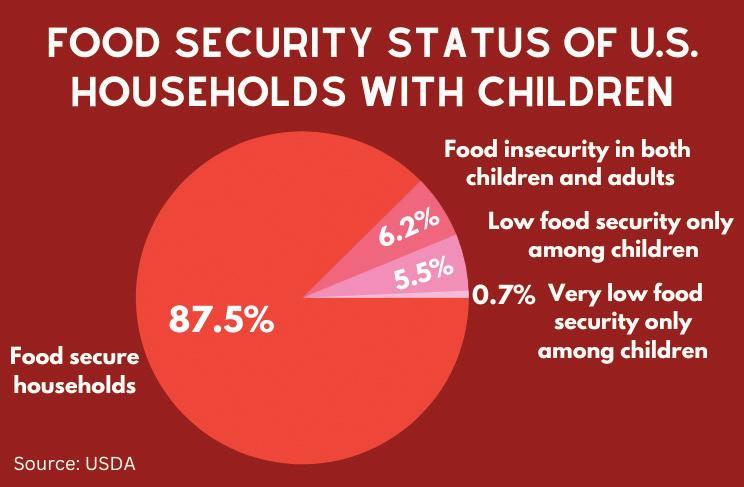
DEVIL’S ADVOCATE | 19 DECEMBER 2022
Columns published in the Devil’s Advocate represent the views of the writers, not those of the newspaper.
photo by Spurthi Nrusimhadevara
infographic by Zoey Larson
infographic by Zoey Larson
photo by Sarah Bernardo




























 Photos by SPURTHI NRUSIMHADEVARA,
Photos by SPURTHI NRUSIMHADEVARA,





 NRUSIMHADEVARA, Associate Photography Editor
NRUSIMHADEVARA, Associate Photography Editor


































 By CLIONA JOY PILIGAN, Staff Writer
By CLIONA JOY PILIGAN, Staff Writer




 Photos by DENISE SORIANO, Photography Editor
Photos by DENISE SORIANO, Photography Editor





 Name: Cliona Joy Piligan Position: Staff Writer
Name: Cliona Joy Piligan Position: Staff Writer













 Soriano
Soriano




























